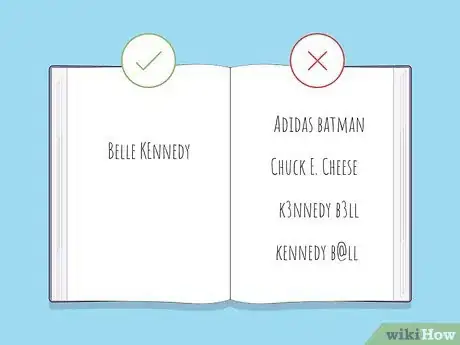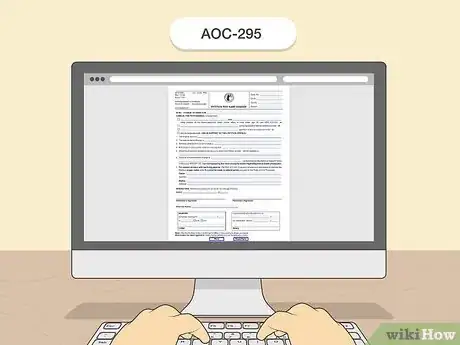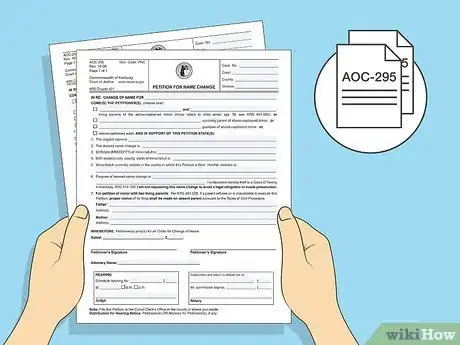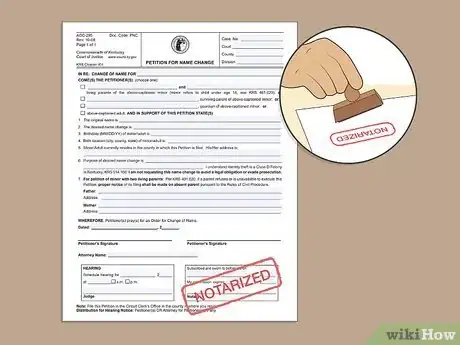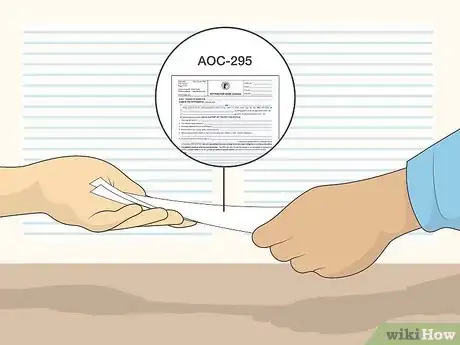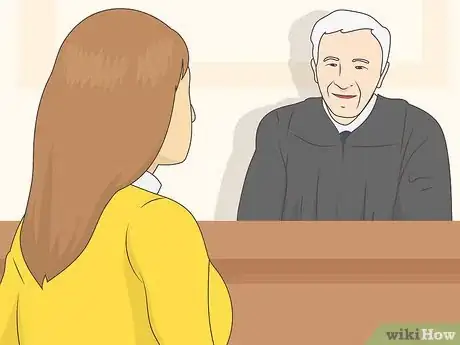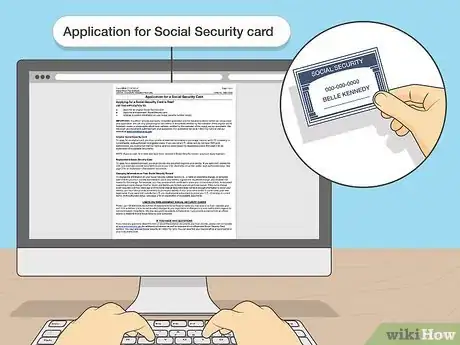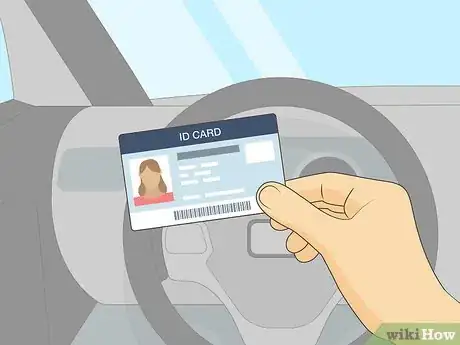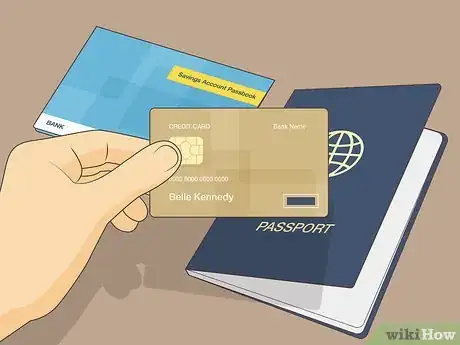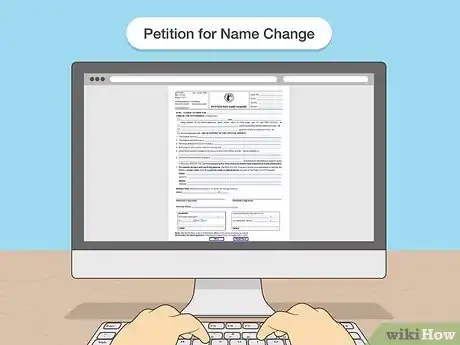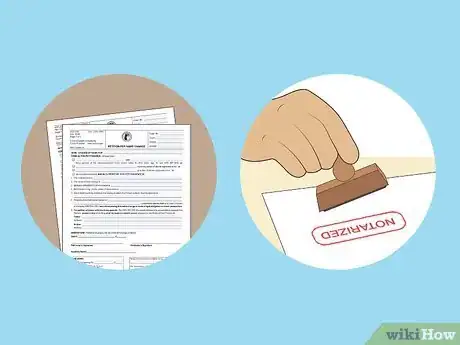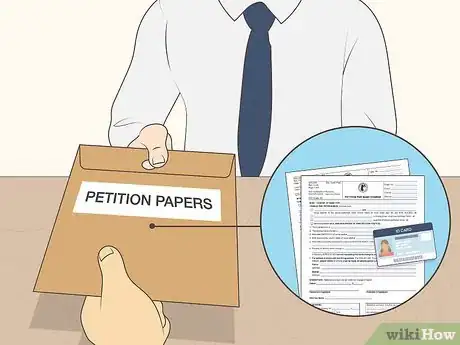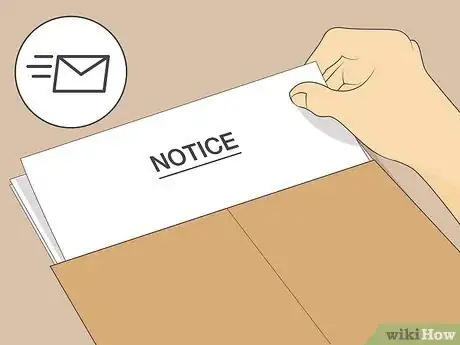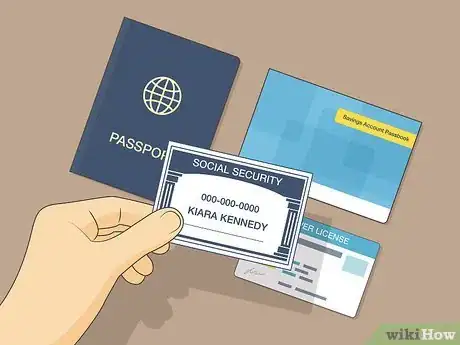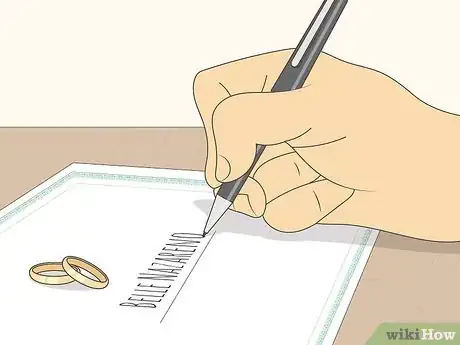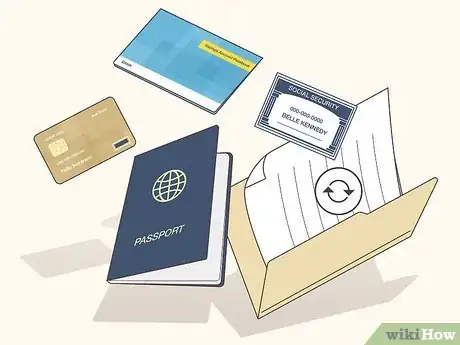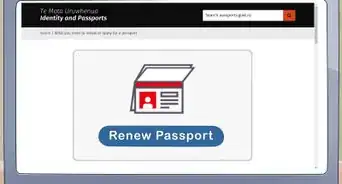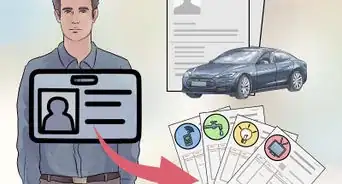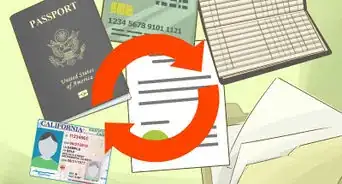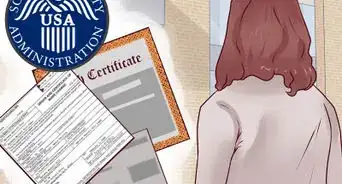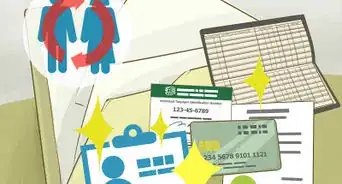This article was co-authored by Clinton M. Sandvick, JD, PhD. Clinton M. Sandvick worked as a civil litigator in California for over 7 years. He received his JD from the University of Wisconsin-Madison in 1998 and his PhD in American History from the University of Oregon in 2013.
There are 15 references cited in this article, which can be found at the bottom of the page.
This article has been viewed 72,103 times.
In the State of Kentucky, you can change your name for almost any reason. Changing your name at the time of your marriage or divorce is relatively easy. You can also change your name (or the name of a minor child) for other reasons by following a different process. With both methods, you will need to fill out the proper paperwork, get a new Social Security card, and change your name on all of your accounts.
Steps
Petitioning For A Name Change
-
1Choose your new name carefully. Legally changing your name is a serious decision, so you should make sure that you choose a name that you like enough to keep. Before beginning the process of changing your name, practice signing it, and have a few people close to you call you by that name to make sure you like it.
-
2Make sure your new name will be legal. You will not be able to change your name if your new name would imply "fraudulent intent" (i.e. that you are not trying to gain some benefit by misleading others about your identity).[1] There are, however, several other reasons why you might be denied a name change, including any of the following:[2]
- You are avoiding bankruptcy by pretending to be someone else.
- Your new name violates a trademark (e.g. changing your name to "Chuck E. Cheese" or "Adidas Batman").
- The name uses numbers or symbols (except Roman numerals).
- The name includes obscene words.
- If you are having trouble determining if your name change is legal, or need legal assistance with this process, hire an attorney. Legal self-help centers may also available to help with name changes, and legal fees may be waived if you demonstrate sufficient financial need. Search online to see what legal aid resources are available in your community.
Advertisement -
3Complete a Petition for Name Change. To get a court order officially changing your name, you must fill out a "Petition for Name Change," numbered AOC-295. You can download the form here. The form is also available at the district court clerk's office. Do not sign the form before it is notarized.
- This form cannot be handwritten. It must be typed.[3]
- Leave the case number blank. You will not be issued a case number until you file your forms with the court clerk.
- To complete the court and county information, enter the name of the court and the county where you will file the Petition.
- Part 7 of the form is only applicable if you are filing on behalf of a minor child to change the child's name.
-
4Make two copies of the Petition for Name Change. You will have both copies notarized, and will take both to the court clerk for filing.
-
5Have your Petition copies notarized. Take both copies of your unsigned Petition to a notary public. The notary will notarize your paperwork, verifying that you signed the documents in his or her presence. Bring a valid form of identification, such as a driver's license or passport, to verify your identity.
- To find a notary online, visit the Notary Public Directory.
- You can also find a notary public by visiting your local bank. Most banks do not charge a fee for notary services if you are a bank customer. If you are not a bank customer, you can use the bank's notary service for a small fee.
-
6File your Petition. Bring both copies of the notarized petition to the court clerk's office at the courthouse. Use this directory to locate your local courthouse. The clerk will stamp the Petition and issue a case number.
- The clerk will require you to pay a filing fee, which varies from county to county. (The fee in Jefferson County, KY is $43 as of 2015.)[4]
- The clerk may instruct you to complete additional county-specific forms, such as a criminal background check.
- Present a valid photographic identification. If you have a valid photo ID, the clerk may simply submit the Petition to the judge for a signature. Otherwise, you may need to attend a hearing at a later date.[5]
-
7Attend your hearing, if required. You may be required to attend a hearing to verify your identity and answer any questions the judge has to ensure that your new name is not fraudulent or misleading.[6] If the clerk notifies you that you need to attend a hearing before a judge, you will need to appear in court at a later date. Answer the judge's questions clearly and honestly.
- If your petition is denied, get a copy of the denial order and try again.
- If the judge approves your request, you will be granted a name change court order.
-
8Change your name on your Social Security card. Once you have received a court order changing your name, your next step will be to obtain a new Social Security card, which will require you to fill out a form and either deliver it to a Social Security Administration office or mail it in with the required documents.[7]
- Download and complete the application for a new Social Security card, available online.
- Gather your paperwork together. You will need your court order, birth certificate, photo ID (driver's license, passport, or state ID card) and a completed application for a new Social Security card.[8]
- Submit your documents to the Social Security Administration. You can make an appointment to change your name in person, or you can mail in the appropriate documents. All original copies will be mailed back to you with a receipt.[9]
- You can find the address for the Social Security office nearest you via a locator on the Social Security Administration website.[10]
- Your new card should arrive within 10 business days from the date on your receipt.
-
9Change your name on your driver's license or state ID card. Visit your local DMV with your new Social Security card and your old driver's license or ID card to receive a new ID card.[11] Also bring your court order and some proof of residency, such as a utility bill or a postmarked letter with your name and current address. You are required to notify the DMV of your name change within 10 days of the date of the court order changing your name.[12]
- You may be required to pay a fee, give a thumbprint, and/or surrender your old ID.
-
10Change your name on all your other documentation. Here is a short list of what you might consider:[13]
- Bank accounts
- Credit cards
- Leases or mortgages
- Car title
- Voter registration
- Medical offices
- Post office boxes
- Passport
Petitioning to Change the Name of a Minor Child
-
1Choose a new name for the child. Common reasons for changing a minor child's name include marriage, partnership, divorce of the parents, and adoption. A child's name can be changed for other reasons as well.
-
2Fill out a Petition for Name Change. The process for changing the name of a minor child is substantially the same as petitioning for a name change as an adult, and you can follow the same steps. When completing Part 7 of the Petition for Name Change, both biological parents must sign the Petition before a notary public.
- If one biological parent is deceased, you will need to present a copy of the death certificate to the notary and court clerk.[14]
-
3Have two copies of the Petition notarized. Take your Petition copies to a notary public and sign them in the presence of the notary, who will notarize them. Bring a valid photo ID.
-
4File your Petition. Bring your notarized copies to the clerk's office, along with a valid photo ID. The clerk will stamp you Petition and issue a case number. The clerk may instruct you to complete additional county-specific forms. If a hearing is required to inquire into the reasons for the name change or to permit another parent to object, the clerk will give you a court date.
-
5Give notice to an absent or non-cooperating parent. If one parent is not available (the parent's location is unknown, or he or she does not consent to the child's name change), the parent must be given notice of the Petition.[15] To give notice, send a certified letter with a copy of the filed Petition with the court date to the parent's last known address.[16] You will be asked to provide proof of that notice at your hearing. The parent will have an opportunity to object to the name change.[17]
-
6Change the minor child's name on other documents. Change the child's name on Social Security cards, driver's licenses, bank accounts, medical records, passports, and others, as applicable.
- To get a new Social Security card, locate your local office here. Mail this application or deliver it in person, along with the court order, birth certificate, and photo ID.
- To change the name on the child's driver's license, visit your local DMV with the new Social Security card and old driver's license. Also bring the court order and some proof of residency, such as a postmarked letter with the name and current address. If the child is a licensed driver, he or she is required to notify the DMV of the name change within 10 days of the date of the court order changing his or her name.[18]
Changing Your Name During Marriage or Divorce
-
1Choose a new name for yourself. Upon marriage or entering into a domestic partnership, you might choose to keep your last name the same, take the last name of your partner, hyphenate your names, make your old last name your middle name, or some other combination that fits your family.[19] Similarly, upon divorce or ending a partnership, you may wish to change your name back to what it was before.
- This method may only permit you to change your middle and/or last name to the last name of either spouse, or combine your last names. If you would like to change your middle or last name to something else, or to change your first name, you may need to file a Petition for Change of Name.
-
2List your new name on your marriage certificate or divorce petition. When you go to the courthouse to get your marriage certificate, the clerk should ask you if you would like to change your name. Make sure your full new name is listed on the marriage certificate.[20] Similarly, you can request that the court change your name back to your prior name in your divorce paperwork.
- If you have already obtained your marriage certificate and it does not include your name change, you will need to use the court system to change your name.
-
3Change your name on other documents. Change your name on your Social Security card, driver's license, bank accounts, medical records, passport, leases, car title, and others, as applicable.
- To get a new Social Security card, locate your local office here. Mail this application or deliver it in person, along with the court order, birth certificate, and photo ID.
- To change the name on your driver's license, visit your local DMV with your new Social Security card, old driver's license, court order, and proof of residency (such as a utility bill or a postmarked letter with your name and current address. You are required to notify the DMV of your change within 10 days of the date of the court order changing your name.[21]
Warnings
- Keep your old identification, just in case.⧼thumbs_response⧽
- This article is intended as legal information and does not provide legal advice. If you need legal advice, contact a licensed attorney.⧼thumbs_response⧽
References
- ↑ http://definitions.uslegal.com/f/fraudulent-intent/
- ↑ http://family.findlaw.com/marriage/how-to-legally-change-your-name.html
- ↑ http://info.legalzoom.com/legally-change-last-name-kentucky-20030.html
- ↑ http://courts.ky.gov/courts/Jefferson/probate/Pages/CostsFees.aspx
- ↑ http://info.legalzoom.com/legally-change-last-name-kentucky-20030.html
- ↑ http://info.legalzoom.com/name-change-hearing-consist-civil-court-26296.html
- ↑ https://www.theknot.com/content/name-change-101
- ↑ http://www.ssa.gov/online/ss-5.pdf
- ↑ http://www.ssa.gov/forms/ss-5.pdf
- ↑ https://secure.ssa.gov/ICON/main.jsp
- ↑ https://www.theknot.com/content/name-change-101
- ↑ http://transportation.ky.gov/Driver-Licensing/Pages/Driver-License-ID-Card-General-Information.aspx
- ↑ http://family.findlaw.com/marriage/how-to-legally-change-your-name.html
- ↑ http://info.legalzoom.com/legally-change-last-name-kentucky-20030.html
- ↑ http://www.lrc.ky.gov/statutes/statute.aspx?id=41792
- ↑ http://info.legalzoom.com/legally-change-last-name-kentucky-20030.html
- ↑ http://namechange.uslegal.com/name-changes-laws-by-state/kentucky-name-change-law/
- ↑ http://transportation.ky.gov/Driver-Licensing/Pages/Driver-License-ID-Card-General-Information.aspx
- ↑ http://www.kiplinger.com/article/credit/T065-C006-S001-5-choices-for-changing-your-name-after-marriage.html
- ↑ https://www.theknot.com/content/name-change-101
- ↑ http://transportation.ky.gov/Driver-Licensing/Pages/Driver-License-ID-Card-General-Information.aspx

